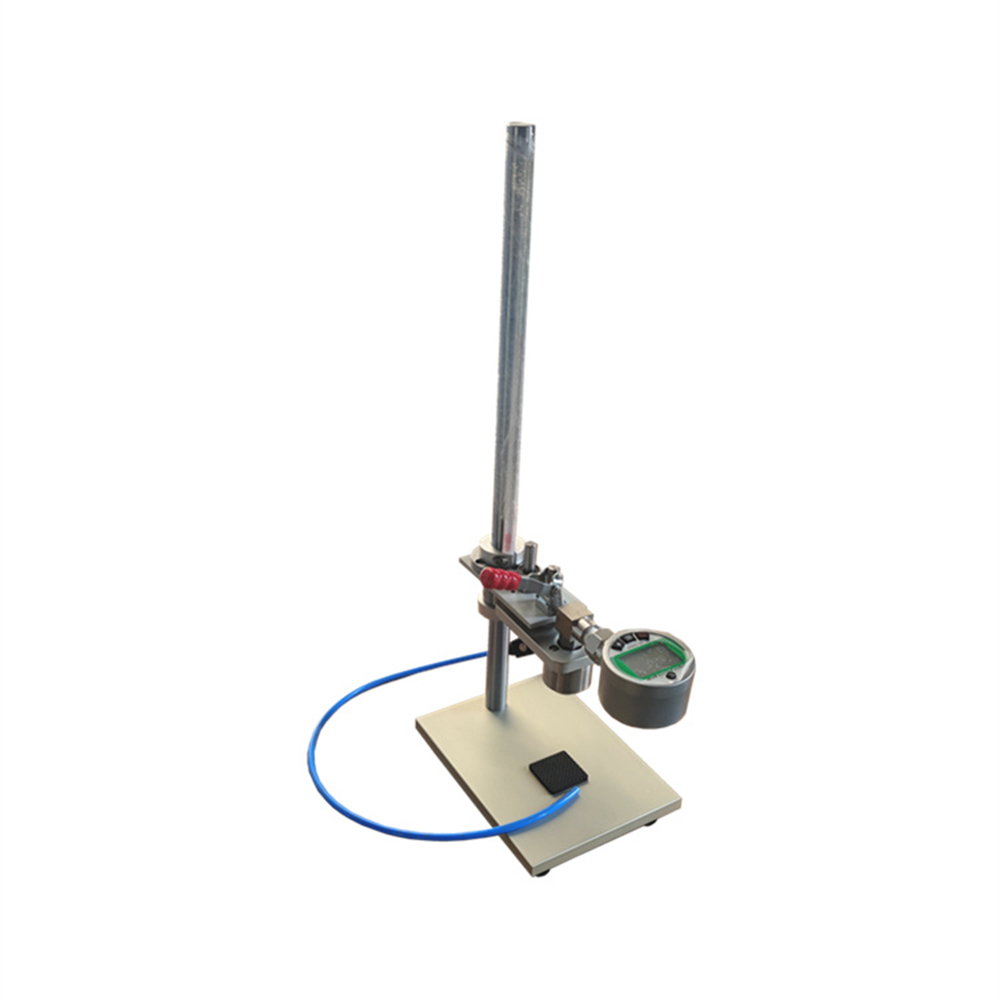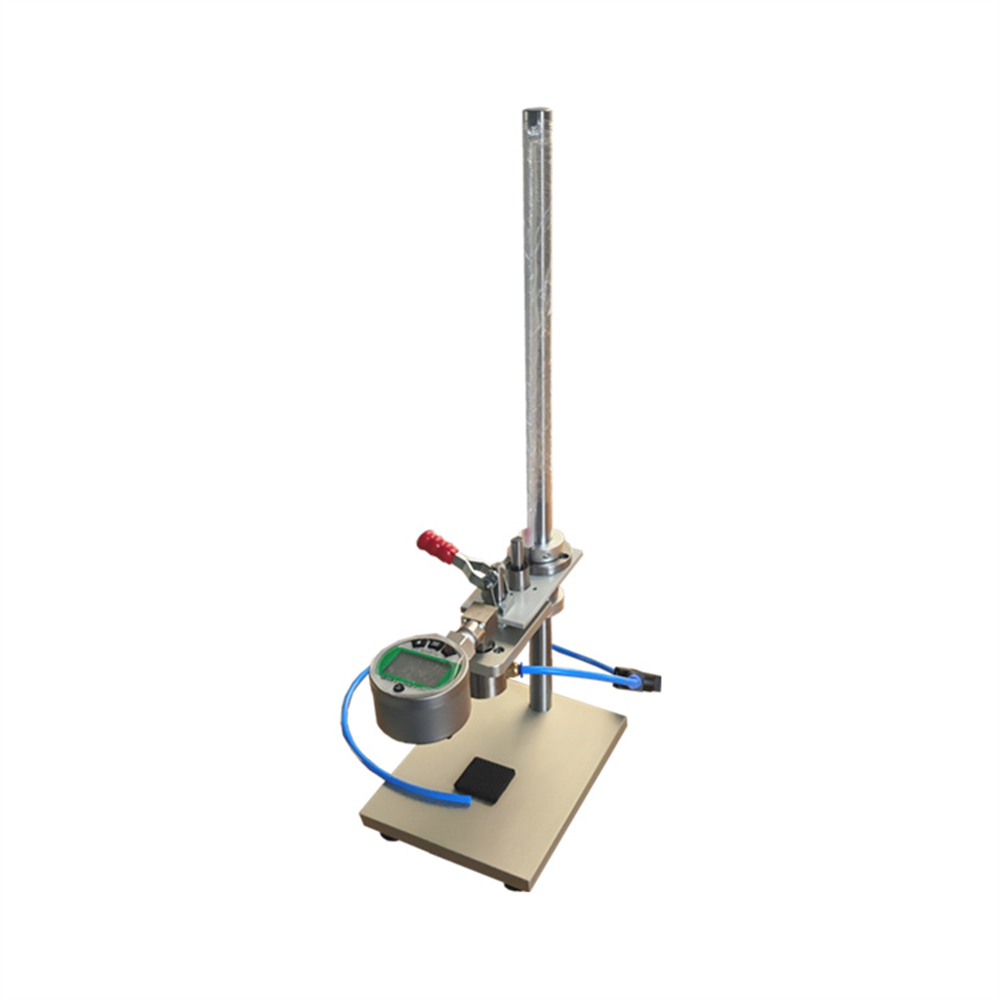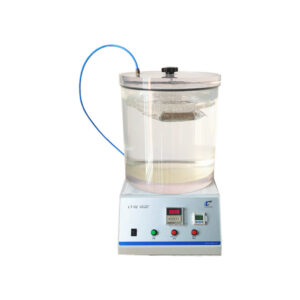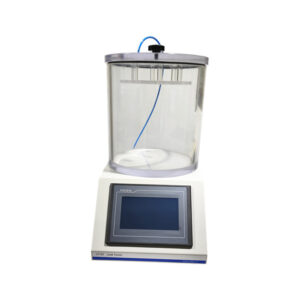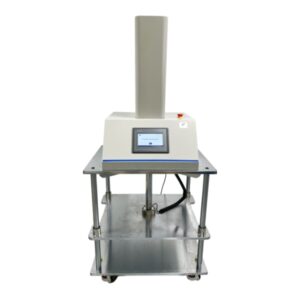جهاز اختبار كربنة المشروبات هو أداة أساسية لضمان الجودة والاتساق في المشروبات الغازية. صُمم هذا الجهاز لقياس حجم ثاني أكسيد الكربون بدقة، ويدعم المنتجين في تقديم منتجات تلبي معايير المذاق والسلامة. يُستخدم جهاز اختبار الكربنة على نطاق واسع في صناعة المشروبات، ويساعد جهاز اختبار الكربنة في مراقبة الجودة والبحث من خلال توفير وسيلة فعالة وموثوقة للتحقق من مستويات الكربنة في المشروبات مثل المشروبات الغازية والمياه الفوارة والمشروبات المنكهة.
التطبيقات الرئيسية لجهاز اختبار كربنة المشروبات
جهاز اختبار الكربنة لا يقدر بثمن في العديد من الصناعات، بما في ذلك قطاعات إنتاج الأغذية والمشروبات والتعبئة والتغليف ومراقبة الجودة. وبفضل قدرته على قياس مستويات ثاني أكسيد الكربون بدقة، يضمن جهاز الاختبار الحفاظ على المشروبات على الفوران والنكهة المرغوبة مع مرور الوقت. هذه المعدات مفيدة بشكل خاص لوكالات فحص الجودة، وشركات التعبئة والتغليف، ومختبرات البحث والتطوير في صناعة المشروبات.
لمحة عامة عن ASTM F1115 لاختبار الكربنة
معايير ASTM F1115وهو معيار معترف به في اختبار المشروبات، يحدد طرق التحديد الدقيق لحجم الكربنة في المشروبات المعبأة. وتوفر إرشادات واضحة لقياس الضغط ودرجة الحرارة، والتي تعتبر ضرورية لتقييم الكربنة بدقة. ومن خلال اتباع معيار ASTM F1115، يمكن لمنتجي المشروبات ضمان تحقيق منتجاتهم لجودة متسقة وتلبية معايير السوق.
إجراء الاختبار باستخدام جهاز اختبار كربنة المشروبات
يتميز جهاز اختبار كربنة المشروبات بعملية بسيطة وفعالة في نفس الوقت مصممة للحصول على نتائج دقيقة. هذه العملية خطوة بخطوة متوافقة تمامًا مع معايير ASTM F1115:
- اخترق غطاء الزجاجة يبدأ جهاز الاختبار بثقب غطاء الزجاجة للسماح بالوصول إلى الضغط الداخلي للمشروب.
- افتح صمام التهوية: حرر أي ضغط زائد من خلال صمام التنفيس لتثبيت ظروف القياس.
- هز الزجاجة: قم بالرج القوي لمدة 40 ثانية لتنشيط إطلاق ثاني أكسيد الكربون المذاب.
- أغلق صمام التهوية: بعد مرحلة التحرير، أغلق الصمام لمنع المزيد من التغيرات في الضغط.
- قياس الضغط ودرجة الحرارة: مع استقرار الضغط، قم بتسجيل القياسات بوحدة MPa أو أي وحدة أخرى قابلة للتطبيق أثناء قياس درجة حرارة السائل في نفس الوقت.
- احسب حجم CO₂ CO₂: استخدم هذه القيم مع جدول حجم الكربنة لتحديد حجم ثاني أكسيد الكربون النهائي، مما يوفر تحليلاً كاملاً للكربنة.
الميزات التقنية لجهاز اختبار كربنة المشروبات
صُمم جهاز اختبار الكربنة هذا من أجل الدقة وسهولة الاستخدام، حيث يوفر ميزات تقنية تضمن نتائج موثوقة مع كل اختبار:
- الرأس الثاقب المروي: هذا الرأس الثاقب المتين معالج بالحرارة لطول العمر ويوفر أداءً مستقرًا طوال عملية الاختبار.
- مقياس ضغط عالي الدقة: يتيح مقياس الضغط تحويلات متعددة الوحدات، مما يتيح سهولة التفسير عبر المناطق ذات معايير القياس المتنوعة.
- تصميم مضاد للتسرب: يحافظ نظام منع التسرب على سلامة الاختبار ويمنع فقدان ثاني أكسيد الكربون، مما يضمن نتائج موثوقة.
- صمام وأنابيب التنفيس: يسمح جهاز الاختبار، المزود بصمام تنفيس وأنبوب، بتحرير الضغط بشكل متحكم فيه لتثبيت ظروف الاختبار.
المعلمات الرئيسية لجهاز اختبار كربنة المشروبات
جهاز اختبار الكربنة مناسب لاختبار مجموعة متنوعة من أحجام زجاجات المشروبات بارتفاع يصل إلى 350 مم، ويوفر المواصفات الرئيسية التالية:
- نطاق الاختبار: 0 ~ 1 ميجا باسكال، وهو ما يغطي مستويات الكربنة القياسية في معظم المشروبات.
- القرار: 0.0001 ميجا باسكال، مما يضمن الدقة في كل قياس.
- الهز اليدوي والثقب: يوفر للمستخدمين التحكم في عملية الاختبار، مما يجعل الأداة متعددة الاستخدامات وقابلة للتكيف.
الامتثال للمعايير الرئيسية (ASTM F1115، GB/T 10792)
يفي جهاز اختبار الكربنة هذا بمعايير ASTM F1115 وGB/T 10792. وفي حين أن ASTM F1115 يحكم طرق الاختبار في الأسواق الغربية، فإن GB/T 10792 معترف به على نطاق واسع في الأسواق الآسيوية. يوضح الامتثال لهذه المعايير تعدد استخدامات جهاز الاختبار وملاءمته لبروتوكولات مراقبة الجودة العالمية، مما يجعله خيارًا مثاليًا لمنتجي المشروبات الدوليين.
مزايا استخدام جهاز اختبار كربنة المشروبات
يوفر جهاز اختبار الكربنة هذا العديد من المزايا لمنتجي المشروبات الذين يبحثون عن كربنة عالية الجودة ومتسقة في منتجاتهم:
- نتائج دقيقة وموثوقة: يتيح تصميم جهاز الاختبار الدقة في قياسات حجم ثاني أكسيد الكربون، مما يضمن جودة المنتج واتساق مذاقه.
- تصميم سهل الاستخدام: وبفضل عملية الاختبار المباشرة والبنية المتينة، فإنه يسهل التشغيل الفعال في كل من إعدادات البحث والتطوير والإنتاج.
- الامتثال المحسّن: من خلال الالتزام بمعيار ASTM F1115 والمعايير الأخرى ذات الصلة، يدعم جهاز اختبار الكربنة ضمان الجودة والامتثال لمعايير الصناعة.
الأسئلة الشائعة: جهاز اختبار كربنة المشروبات و ASTM F1115
- ما أنواع المشروبات التي يمكن اختبارها؟
جهاز الاختبار مثالي للمشروبات الغازية، بما في ذلك الصودا والمياه الفوارة والمشروبات المنكهة. - كيف يحافظ جهاز الاختبار على دقة الضغط؟
يتميز بمقياس ضغط عالي الدقة وتصميم مضاد للتسرب لتثبيت القراءات. - ما أهمية ASTM F1115 في اختبار الكربنة؟
تحدد ASTM F1115 الإجراءات اللازمة لقياس حجم الكربنة بدقة، مما يضمن نتائج موثوقة. - هل يمكن استخدام هذا الاختبار لأحجام الزجاجات المختلفة؟
نعم، فهي تستوعب ارتفاعات الزجاجات حتى 350 مم، مما يجعلها متعددة الاستخدامات لمختلف المنتجات. - كيف يؤثر الهز اليدوي على دقة الاختبار؟
يضمن الهز اليدوي إطلاق ثاني أكسيد الكربون بشكل ثابت، مما يتيح قياسًا أكثر دقة للكربنة عند استخدامه باستمرار.

